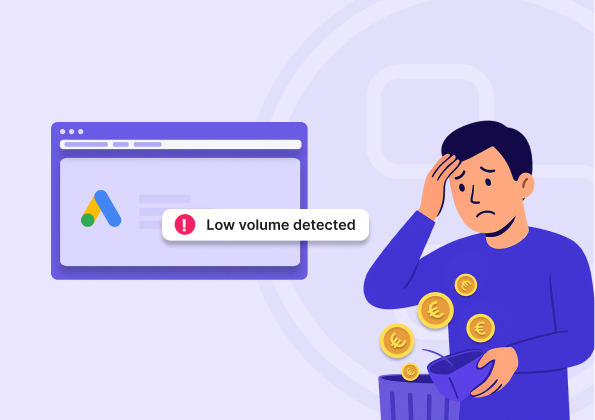Google’s Performance Max (PMax) campaigns are powerful, but they’re only as effective as the data you feed them. When conversion tags don’t load correctly, the algorithm can’t optimize toward what really matters. The results are wasted budget, lost revenue, and a disrupted learning curve.
Let’s dive a bit deeper in how PMax works, what happens when data is missing, and why fixing measurement errors quickly is crucial for your business.
1. How Google Performance Max (PMax) works
Performance Max is a goal-based campaign type in Google Ads that uses machine learning to optimize performance across all of Google’s channels from search to display, to YouTube, Gmail and more.
You provide a budget, conversion goals (like purchases or leads), creatives and so called audience signals (to help PMax understand your ideal target audience). Then the algorithm decides which channels to use, which ad creatives to show and how much to bid in each auction.
The core input for optimization in PMax is conversion data. The system needs accurate feedback on which clicks or views actually lead to real business results. In order to receive such accurate input, PMax relies on conversion tags.
Unfortunately there are many reasons that can cause errors in such tags. The most common causes are code being removed or overwritten by site updates, version rollbacks or deployments and redesign.
It’s also common that the tag manager is misconfigured, leading to wrong triggers, leading to conflicts with other tags or causing a tag to fire more than once resulting in duplication or blocking.
2. Impact of a conversion tag not loading correctly
If your conversion tag doesn’t fire or loads inconsistently, Google’s optimization is effectively blinded. Google’s algorithm thinks some traffic isn’t converting, so it reduces spend there.
You waste budget because spending shifts toward cheap clicks or impressions that don’t actually convert. You end up paying for traffic without getting the real sales signals the system needs.
Also you will lose revenue as high-value traffic sources may be underfunded because their conversions aren’t recorded. As a result effective channels get scaled down, leading to fewer overall sales.

3. Impact of incomplete or missing data on the algorithm
Most companies already monitor uptime, server health, and even SEO. But what about the actual data being collected from users? If a tracking tag breaks, a dataLayer variable changes, or a marketing pixel stops firing, you may not notice until revenue drops or campaigns underperform.
A tag that is misfiring for a few hours up to a few days leads to short-term data loss. The PMax system may misinterpret signals and reallocate budget poorly. Some inefficiency occurs, but performance can bounce back quickly once fixed.
When a tag is not firing several days or more the algorithm starts to “re-learn” using incomplete data, damaging the targeting and bidding models and undoing weeks of optimization. And once an issue is found and resolved, the campaign requires a significant amount of fresh conversion data to train itself again.
4. How long does the impact last after fixing the tag?
With minor outages between several hours to a day the recovery usually takes between 1 to 3 days.
Major outages of several days or weeks will take at least a similar recovery time. For example seven days of broken tracking often means seven up to fourteen of recovery. The reason is that machine learning models weigh recent history most heavily. Once accurate data is collected again, the system needs to rebuild confidence before it can scale efficiently.
The bottom line for Performance Marketers
- A broken conversion tag = wasted budget + lost revenue.
- The algorithm’s learning curve gets disrupted, leading to inefficient spending even after the issue is fixed.
- Recovery time typically mirrors the outage length, until enough clean data is gathered again.
- It is crucial for your business to detect errors as they happen and solve them immediately.
Conversion tracking isn’t a technical detail, it’s business-critical and therefore you need a tag monitoring solution like Code Cube Tag Monitor which will detect any tag error instantly.
Reliable tagging ensures your PMax- and other performance campaigns allocate spend toward real customers, not just clicks.


